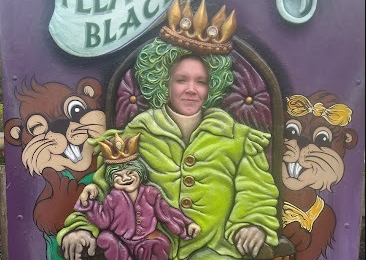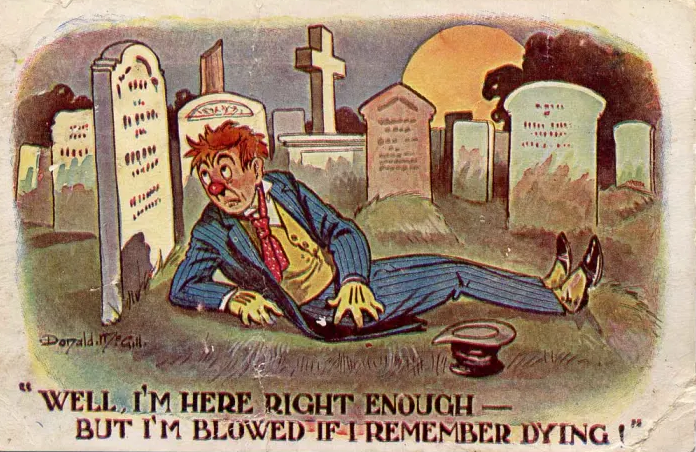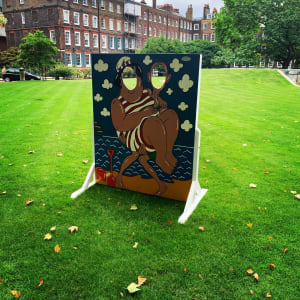What is the History of the Seaside Face in the Hole Photograph?
A common feature of funfairs and holiday resorts across the UK are seaside face in a hole photo boards. Visitors place their face through a hole in a wooden board of which a humorous cartoon scene is painted, what you get is an amusing photo and a fun memory.
The scenes depicted vary but a common one includes a strongman lifting a woman in a bathing suit aloft, the humour being that traditionally the people taking part reverse the roles. There are of course other fun ideas, famous paintings like the Mona Lisa are common or The Last Supper have been created much to the delight of visitors. Why is it funny? Honestly that’s something we don’t have the answer to - but for hundreds of years people have laughed at these attractions, so we think the best policy is not to over think it and just join in with the fun!

You may not have thought about the history of Face In A Hole attractions, where they originated and when and their story may surprise you. Some people even credit the design of face in a hole photo stands to a macabre reaction to the French Revolution - perhaps it's a macabre tongue-in-cheek spin-off of the rampant guillotining that took place during that bloody historical period across the channel. Perhaps they're so popular at the UK seaside as a modern response to the bawdy seaside postcards that were so popular in the early 20th century.

Other origin stories date back to the 1820s, where people would have a bit of fun with the strict class system where boards would be decorated with aristocrat and pauper clothes, people would stand behind, put their head through the hole and show their friends what it would look like if the became a lord or lady. There were no photos back then; this was just a bit of fun people would take in at fairs taverns.
So we have the humble beginnings of the idea, but this carnival stall is not complete without a photo and for that we have to fast forward a little to the 1870s. Hop across the pond and take a look in the work studio of renowned artist Cassius Marcellus Coolidge. This was the artist famous for painting the surrealist artwork of the Dogs Playing Poker, so it’s not surprising it was him who brought the idea all together.
Coolidge received the patent in 1874 and his first designs were strictly for surrealist photography work, not just heads but torsos. Subjects would be sat in airplanes and other dramatic scenes for that time. These then evolved to become more and more comic until Coolidge found commercial success with the images by putting them on postcards.
Putting these hilarious images on postcards was a stroke of marketing genius, as the photographs found themselves mailed across the world, advertising the Seaside Peep Board photo booth in the UK and internationally.

From then on the comical scenes became part of every funfair and seaside promenade in the country and we still enjoy them today.
I bet you didn’t think so much history could be packed into one simple item! Find out more funfair and fairground history with We Are Tricycle.